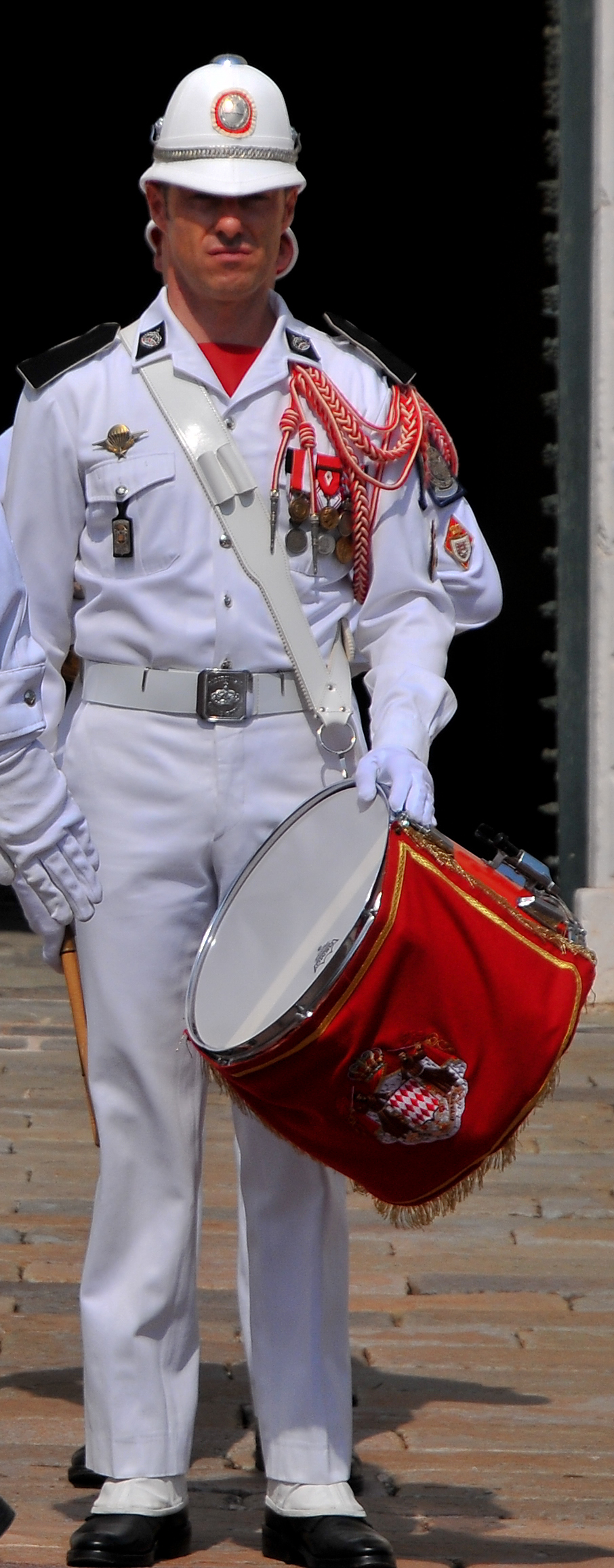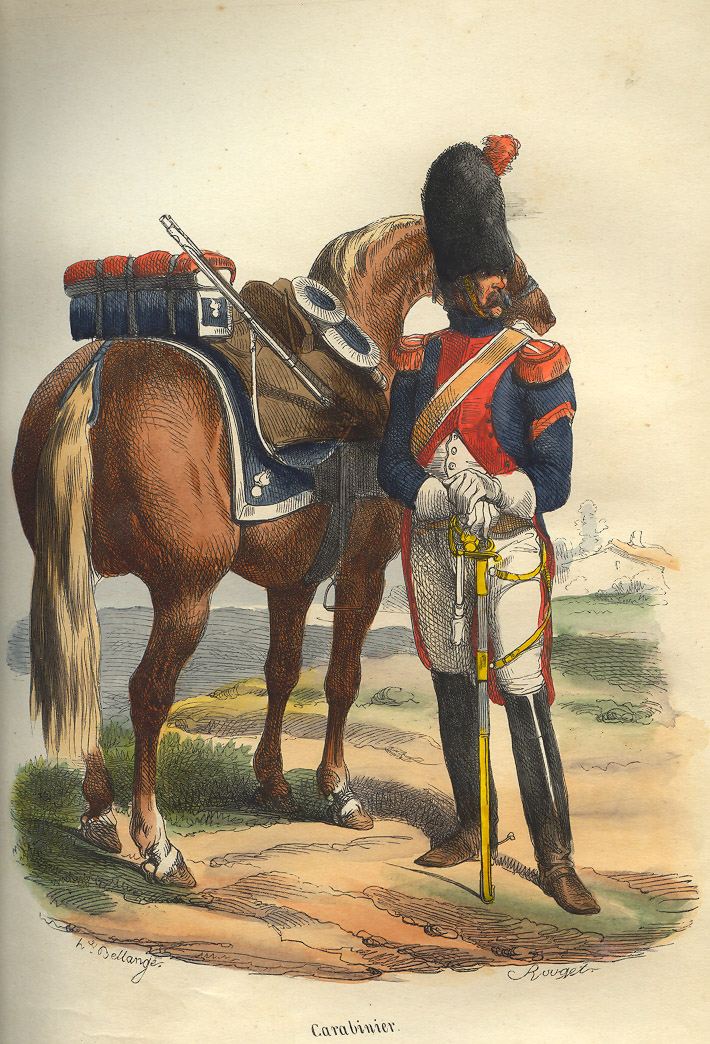|
Military Of Monaco
The Public Services (french: link=no, La Force publique) are the military force of Monaco. However, the country has a very limited military capability and depends almost entirely upon its larger neighbour, France, for defence. In total, there are over 250 people employed as military personnel in some form. There is no conscription in Monaco. Its branches are the Compagnie des Carabiniers du Prince and the Corps des Sapeurs-Pompiers de Monaco. Command The Public Services are under the joint command of the ''Supreme Commander of the Public Services'' (french: link=no, Le Commandant supérieur de la Force publique), currently Colonel Tony Varo. Under the chief commander, each of the two principal military corps is headed by a ''Chief of the Corps'', who holds the rank of commandant or lieutenant colonel, according to personal seniority. The military band is commanded by the ''Chief of the Orchestra'', with the rank of commandant. Border patrol and patrol boats Some military rol ... [...More Info...] [...Related Items...] OR: [Wikipedia] [Google] [Baidu] |
Compagnie Des Carabiniers Du Prince
The Compagnie des Carabiniers du Prince (in Monegsque: ''Cumpagnia d’i Carrabiniei d’u Pri̍ncipu'', Prince's Company of Riflemen in English) is the Infantry branch of the ''Force Publique'', and one of the limited number of militaries that recruits foreigners. Although Monaco's defence is the responsibility of France, Monaco maintains a small force for the protection of the Sovereign and the Prince's Palace. Formed by Prince Honoré IV in 1817, the unit was re-organized in 1909. The company numbers 124 officers and men. Whilst the NCOs and soldiers are local, the officers have served in the French Army or the Republican Guard. Along with the ''Corps des Sapeurs-Pompiers'', the Carabiniers form Monaco's total public forces. History An antecedent of the Carabiniers was the company known in the 19th century as the "Papalins", former soldiers of the Papal States, who, upon the destitution of the Papacy's temporal authority at the time of the Italian Unification, were given ... [...More Info...] [...Related Items...] OR: [Wikipedia] [Google] [Baidu] |
Honoré V, Prince Of Monaco
Honoré V (Honoré Gabriel Grimaldi; 13/14 May 1778 – 2 October 1841) was Prince of Monaco and Duke of Valentinois. He was the first son of Honoré IV of Monaco and Louise d'Aumont. Regent Illnesses resulting from his imprisonment incapacitated Honoré IV in his later years, and following the re-establishment of the Principality in 1814, a regency was established to rule in Honoré's name. This regency was directed, first, by his brother Joseph Grimaldi, then from 1815 by his son, the Hereditary Prince Honoré, who succeeded him in 1819 as Sovereign Prince Honoré V. Reign A professor of the period, Victor de la Canorgue, wrote of Prince Honoré in negative terms: extravagant and fond of luxuries for himself, but miserly for others, even his own family, to whom he gave "pensions disproportionate to his means." This professor endeavored to collect accounts of the reigns of Honoré V and of his brother and successor, Prince Florestan, and to translate them from Italian to Fr ... [...More Info...] [...Related Items...] OR: [Wikipedia] [Google] [Baidu] |
Philippe Deslandes
Philippe is a masculine sometimes feminin given name, cognate to Philip. It may refer to: * Philippe of Belgium (born 1960), King of the Belgians (2013–present) * Philippe (footballer) (born 2000), Brazilian footballer * Prince Philippe, Count of Flanders, father to Albert I of Belgium * Philippe d'Orléans (other), multiple people * Philippe A. Autexier (1954–1998), French music historian * Philippe Blain, French volleyball player and coach * Philippe Najib Boulos (1902–1979), Lebanese lawyer and politician * Philippe Coutinho, Brazilian footballer * Philippe Daverio (1949–2020), Italian art historian * Philippe Dubuisson-Lebon, Canadian football player * Philippe Ginestet (born 1954), French billionaire businessman, founder of GiFi * Philippe Gilbert, Belgian bicycle racer * Philippe Petit, French performer and tightrope artist * Philippe Petitcolin (born 1952/53), French businessman, CEO of Safran * Philippe Russo, French singer * Philippe Sella, French ... [...More Info...] [...Related Items...] OR: [Wikipedia] [Google] [Baidu] |
Enlisted Rank
An enlisted rank (also known as an enlisted grade or enlisted rate) is, in some armed services, any rank below that of a commissioned officer. The term can be inclusive of non-commissioned officers or warrant officers, except in United States military usage where warrant officers/chief warrant officers are a separate officer category ranking above enlisted grades and below commissioned officer grades. In most cases, enlisted service personnel perform jobs specific to their own occupational specialty, as opposed to the more generalized command responsibilities of commissioned officers. The term "enlistment" refers solely to a military commitment (whether officer or enlisted) whereas the terms "taken on strength" and "struck off strength" refer to a service member being carried on a given unit's roll. Canadian Forces In the Canadian Forces, the term non-commissioned member (NCM) is used. North Atlantic Treaty Organization For the ranks used by the North Atlantic Treaty Organiza ... [...More Info...] [...Related Items...] OR: [Wikipedia] [Google] [Baidu] |
Non-commissioned Officer
A non-commissioned officer (NCO) is a military officer who has not pursued a commission. Non-commissioned officers usually earn their position of authority by promotion through the enlisted ranks. (Non-officers, which includes most or all enlisted personnel, are of lower rank than any officer.) In contrast, commissioned officers usually enter directly from a military academy, officer candidate school (OCS), or officer training school (OTS) after receiving a post-secondary degree. The NCO corps usually includes many grades of enlisted, corporal and sergeant; in some countries, warrant officers also carry out the duties of NCOs. The naval equivalent includes some or all grades of petty officer. There are different classes of non-commissioned officers, including junior (lower ranked) non-commissioned officers (JNCO) and senior/staff (higher ranked) non-commissioned officers (SNCO). Function The non-commissioned officer corps has been referred to as "the backbone" of the arme ... [...More Info...] [...Related Items...] OR: [Wikipedia] [Google] [Baidu] |
Commissioned Officer
An officer is a person who holds a position of authority as a member of an armed force or uniformed service. Broadly speaking, "officer" means a commissioned officer, a non-commissioned officer, or a warrant officer. However, absent contextual qualification, the term typically refers only to a force's ''commissioned officers'', the more senior members who derive their authority from a commission from the head of state. Numbers The proportion of officers varies greatly. Commissioned officers typically make up between an eighth and a fifth of modern armed forces personnel. In 2013, officers were the senior 17% of the British armed forces, and the senior 13.7% of the French armed forces. In 2012, officers made up about 18% of the German armed forces, and about 17.2% of the United States armed forces. Historically, however, armed forces have generally had much lower proportions of officers. During the First World War, fewer than 5% of British soldiers were officers (partl ... [...More Info...] [...Related Items...] OR: [Wikipedia] [Google] [Baidu] |
Guard Mounting
Guard mounting, changing the guard, or the changing of the guard, is a formal ceremony in which sentries performing ceremonial guard duties at important institutions are relieved by a new batch of sentries. The ceremonies are often elaborate and precisely choreographed. They originated with peacetime and battlefield military drills introduced to enhance unit cohesion and effectiveness in the late 17th and early 18th centuries. Guard mounting by country Armenia Since September 2018, the President's Residence in Yerevan has had ceremonial sentries from the Honour Guard Battalion of the Ministry of Defense to perform public duties at a pair of sentry boxes at the front of the residence. They are posted and relieved in a brief guard mounting ceremony, which includes an exhibition drill of all five guards (the incoming guards, the outgoing guards, and the guard commander). The guard mounting ceremony is held every Saturday and Sunday in the afternoon and evening. Barbados In B ... [...More Info...] [...Related Items...] OR: [Wikipedia] [Google] [Baidu] |
First Aid
First aid is the first and immediate assistance given to any person with either a minor or serious illness or injury, with care provided to preserve life, prevent the condition from worsening, or to promote recovery. It includes initial intervention in a serious condition prior to professional medical help being available, such as performing cardiopulmonary resuscitation (CPR) while waiting for an ambulance, as well as the complete treatment of minor conditions, such as applying a plaster to a cut. First aid is generally performed by someone with basic medical training. Mental health first aid is an extension of the concept of first aid to cover mental health, while psychological first aid is used as early treatment of people who are at risk for developing PTSD. Conflict First Aid, focused on preservation and recovery of an individual's social or relationship well-being, is being piloted in Canada. There are many situations that may require first aid, and many countries ... [...More Info...] [...Related Items...] OR: [Wikipedia] [Google] [Baidu] |
Carabiniers
A carabinier (also sometimes spelled carabineer or carbineer) is in principle a soldier armed with a carbine. A carbiniere is a carabiniere musket or rifle and were commonplace by the beginning of the Napoleonic Wars in Europe. The word is derived from the identical French word ''carabinier''. Historically, carabiniers were generally (but not always) horse soldiers. The carbine was considered a more appropriate firearm for a horseman than a full-length musket, since it was lighter and easier to handle while on horseback. Light infantry sometimes carried carbines because they are less encumbering when moving rapidly, especially through vegetation, but in most armies the tendency was to equip light infantry with longer-range weapons such as rifles rather than shorter-range weapons such as carbines. In Italy and Spain, carbines were considered suitable equipment for soldiers with policing roles, so the term ''carabinier'' evolved to sometimes denote gendarmes and border guar ... [...More Info...] [...Related Items...] OR: [Wikipedia] [Google] [Baidu] |
Monaco City
Monaco City (french: Monaco-Ville) is the southcentral ward in the Principality of Monaco. Located on a headland that extends into the Mediterranean Sea, it is nicknamed The Rock (french: Le Rocher). The name "Monaco City" is misleading: it is not itself a city, but a historical and statistical district. It holds most of the country's political and judicial institutions: the Prince's Palace, the town hall, the government, the National Council (parliament of Monaco), the Municipal Council, the courts and a prison (hanging on The Rock). Geography Monaco City is one of the four traditional quarters (french: quartiers) of Monaco; the others are La Condamine, Monte Carlo, and Fontvieille. It is located at and has an estimated population of 975. It has 19.64 hectares of surface and is located between the districts of Fontvieille and La Condamine. History Monaco Ville was originally called in Greek Monoikos, after the temple of ''Hercules Monoikos'', located in a Phocaean colon ... [...More Info...] [...Related Items...] OR: [Wikipedia] [Google] [Baidu] |
Prince's Palace Of Monaco
The Prince's Palace of Monaco ( French: ''Palais princier de Monaco'') is the official residence of the Sovereign Prince of Monaco. Built in 1191 as a Genoese fortress, during its long and often dramatic history it has been bombarded and besieged by many foreign powers. Since the end of the 13th century, it has been the stronghold and home of the Grimaldi family who first captured it in 1297. The Grimaldi ruled the area first as feudal lords, and from the 17th century as sovereign princes, but their power was often derived from fragile agreements with their larger and stronger neighbours. Thus while other European sovereigns were building luxurious, modern Renaissance and Baroque palaces, politics and common sense demanded that the palace of the Monegasque rulers be fortified. This unique requirement, at such a late stage in history, has made the palace at Monaco one of the most unusual in Europe. Indeed, when its fortifications were finally relaxed during the late 18th cen ... [...More Info...] [...Related Items...] OR: [Wikipedia] [Google] [Baidu] |





.jpg)